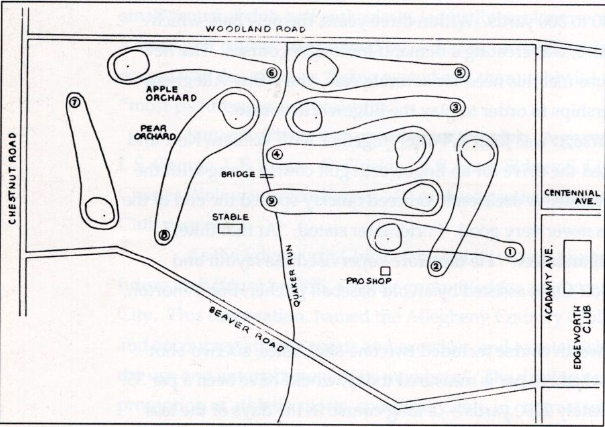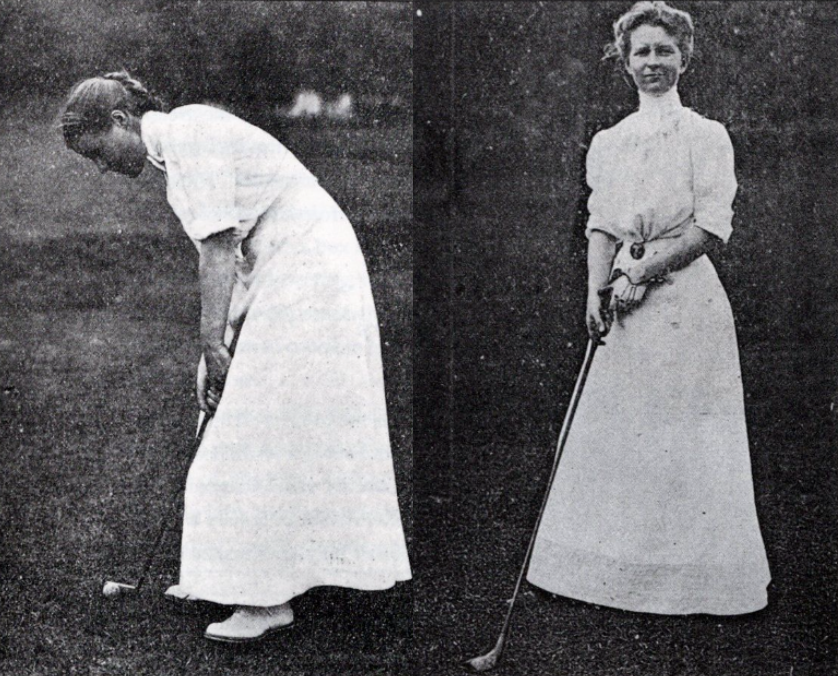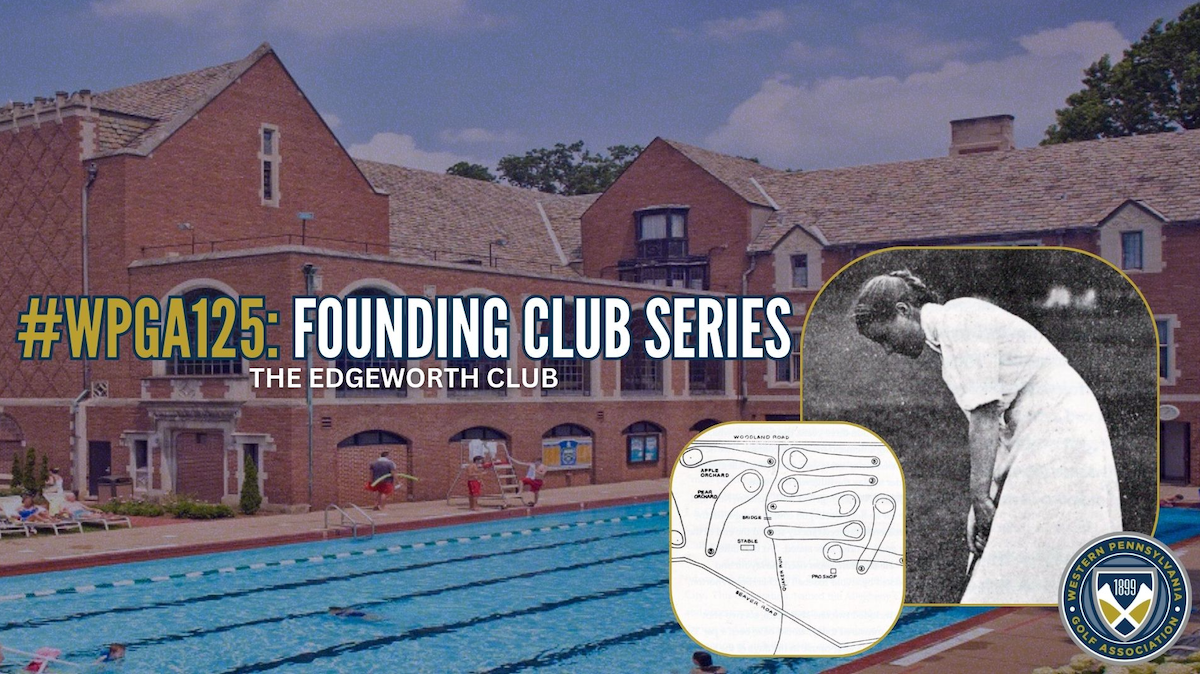WPGA Founding Club Series: The Edgeworth Club
By Josh Rowntree, Director of Communications • November 6, 2024
Four of the five of the Western Pennsylvania Golf Association’s founding clubs still are, in some way, situated on a playable golf course today.
The outlier is Edgeworth Club, a Sewickley-based private establishment that still operates as home for racket sports, bowling, swimming and aerobics.
Sadly, much of Edgeworth’s lore remains a bit of a mystery. It has been over 110 years since a club was swung on its grounds. But its impact on golf locally is undeniable.
Edgeworth’s history begins right alongside golf’s start in Western Pennsylvania. As the Pittsburgh Golf Club, Allegheny Country Club, Edgewood Country Club and Pittsburgh Field Club were commencing the process of welcoming the game to their grounds, so too was the Edgeworth Club.
In 1893, Edgeworth Club members became aware of a new sport that was brought to the region when John Moorhead Jr. put six pea cans in the ground at the Homewood Race Track.
Word spread, and along with a few other members, Robert Lowrie began to design a course on the Shields family property in Edgeworth — a picturesque landscape fixated amongst rolling orchard fields just outside of the City of Pittsburgh.
Quickly, the game became quite popular, and, in 1897, the Edgeworth Club began welcoming golfers to its grounds. James B. Oliver served as the first President of the Edgeworth Club, representing a small but passionate group of players.
Two years after golf began at the Edgeworth Club, another group of men decided to develop another course in the region — Allegheny Country Club.
As golf began to rise in popularity, so did the demand for a better course. In 1900, to keep up with Allegheny Country Club, the Edgeworth Club advanced its six-hole, 1,000-yard layout to nine holes.
However, as golf ball technology developed, the Edgeworth Club constantly fought the battle to lengthen the golf course in its limited space. It was initially able to do so, stretching the nine holes out to approximately 2,200 yards.

Reconstruction of the Edgeworth Golf Course, 1900-1912
John E. Porter, William Kerr and Ard McKelvey were instrumental in the development of the course’s layout and its new clubhouse, and Bob Whorton, a former baseball pitcher, served as the club’s first greenskeeper.
Funding came from members, who were charged $10 for men and $5 for women to build the holes and install water piping throughout the course.
In 1902, the Edgeworth Club’s membership reached a threshold of 300 members. In addition to the family of accomplished Western Pennsylvania golfer and Oakmont Country Club founder H.C. Fownes, Remsen Varick Messler — the son of Pennsylvania Railroad founder Thomas Remsen Messler — was also an early member.
However, change came to the region in 1902, as Allegheny County Club moved out of the City of Pittsburgh’s North Side region and relocated to Sewickley Heights, expanding to an 18-hole layout and altering the way that golf was enjoyed locally. This kickstarted the beginning of the end for the Edgeworth Club.
Membership began to shift towards the 18 holes of Allegheny beginning in 1903, and the region’s most prominent golfers moved to the more challenging and adventurous course just down the road. In that year, Edgeworth Borough was incorporated and plans to use the land occupied by the golf course as a new housing development were drawn up.
But there was still some golf to be played at the Edgeworth Club, particularly for women, who more enjoyed from the shorter layout and were able to have several competitions throughout the years.

Miss Bertha Taylor and Mrs. C. I. Shannon on the Edgeworth Links. Photos courtesy of Carnegie Library.
By 1909, pressure began mounting from real estate developers on the usage of the land and, in that same year, new housing construction started around the course.
In 1911, despite efforts to reimagine the layout of the course to accommodate the ongoing construction, the Club made the decision to abandon golf for the season. It never returned in full, and, by 1913, there are no accounts of golf being played at the Edgeworth Club, essentially ending its history in the game.
While golf at the Edgeworth Club no longer exists, the Club still stands today, sitting adjacent to Sewickley Academy. A sprawling facility with plenty of history in its walls, the building now serves different purposes.
But it’s roots in the early days of golf in Western Pennsylvania remain strong, and its early involvement in the WPGA helped make the Association into what it is today. And, for that, the local golf community can look back at Edgeworth with pride.
For media inquiries, please contact WPGA Director of Communications Josh Rowntree.
About the WPGA
Founded in 1899, the Western Pennsylvania Golf Association is the steward of amateur golf in the region. Started by five Member Clubs, the association now has nearly 200 Member Clubs and nearly 37,000 members. The WPGA conducts 14 individual competitions and 10 team events, and administers the WPGA Scholarship Fund and Western Pennsylvania Golf Hall of Fame.
